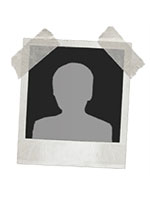"Battles are won by slaughter and manoeuvre. The greater the general, the more he contributes in manoeuvre, the less he demands in slaughter." --Sir Winston Churchill.
There are pros and cons to theater of the mind style of play, and much of it is determined by the interplay between the game master and the players.
What is Theater of the Mind?
In a role-playing game, when there is a physical encounter during adventure and possible conflict, the GM uses no board or other way of tracking maneuver and location. It is all done in the mind, or possibly with figures on the table. These are not in any particular physical relationship to one another except for any individual(s) they are currently fighting. This is obviously quicker than using actual detailed maneuver.From the first time I played an RPG (D&D, original booklets plus Greyhawk) we used a square grid and pieces. This was not required by the rules, though it has become the rule standard for more recent D&D (to the extreme that one presenter at GenCon called D&D 3.0 “Fantasy Squad Leader” – Squad Leader is the famous Avalon Hill individual WW II combat game). Being a wargamer, and a board game designer, it never occurred to me to use Theater of the Mind in RPGs. I’ve always used a board and pieces.
To Grid or Not to Grid?
The first thing to note is that theater of the mind can sometimes make it harder for the players to specify where their characters are located, to act to block enemy access, to indicate anything else that involves tactical movement. In other words, the “board” is missing. A board is an objective reality in the game that each player can engage with, vs. relying on the GM telling them what they can see. Conversely, the major purpose of a board in a boardgame is to reduce confusion while depicting geospatial relationships and maneuver.This lack of precision with Theater of the Mind play can bother some people: I knew one well-known board wargame publisher who said that he doesn’t like RPGs because they’re too “loosey goosey”. He wanted the precision one gets from board game rules. Perhaps Theater of the Mind helped engender his attitude – “what, no board and pieces?” But it could be because RPGs derive from miniatures wargame rules, and typically such rules involve negotiation about their actual meaning, that is, they are frequently imprecise.
If treating tabletop role-playing games like strategic battles, where every action and move has consequences, grids make sense. But for players who want more dynamic action, where the dimensions of a room matter less than the cool stuff happening in the game, a grid can feel restrictive. Different rulesets can encourage or discourage this level of engagement. Tactical games, like D&D’s heritage from wargaming, focus on movement and actions. Narrative games instead focus on story and flow.
Get Your Tickets
It’s no accident that storytelling games tend to rely on Theater of the Mind play; it lends itself quite well to storytelling. The GM is effectively telling you what happens, just as the author of a novel does. There is no board or miniatures to get in the way of the narrative, where PCs are often equally spaced out five feet apart.Five or so years ago I watched a Dystopia Rising tabletop RPG being played at a college game club. Quite apart from the masses of hard-to-read D10s being used, I was impressed that there was no visual depiction of what was happening. They were using Theater of the Mind for their combat (which otherwise was very detailed, down to what body part was struck, and absorption of damage by armor). On the other hand, at GrogCon in central Florida more recently, a convention for AD&D players, some GMs used a board and pieces, some did not.
Whether or not you use Theater of the Mind is likely decided by the kind of game your game master wants to run, and the kind of game your players are willing to play.
Your Turn: If you use theater of the mind, how do you handle logistics like positioning and spatial relationships to creatures and objects?

